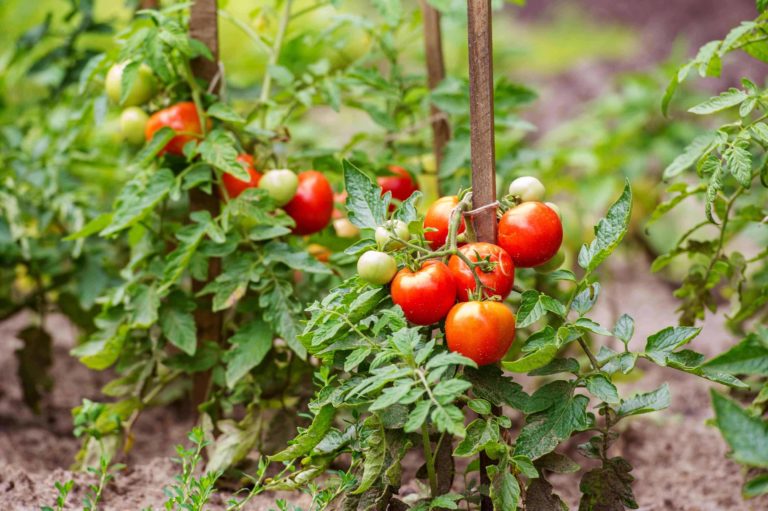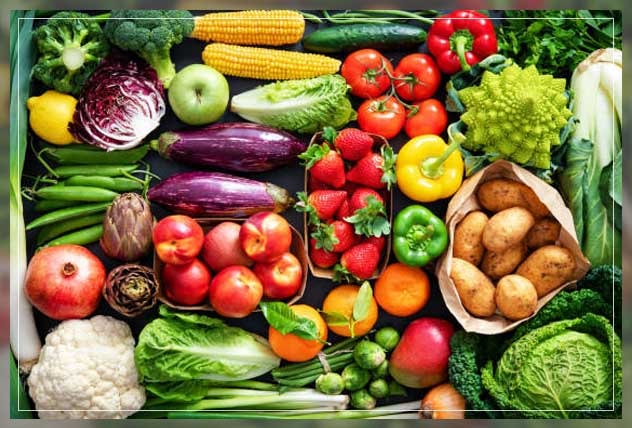- General
- Updated on July 2, 2025
Simple Home-Garden Vegetables for Every Indian Gardener

Cultivating vegetables in your Indian home garden is both rewarding and budget-friendly. Whether you’re tending a cozy balcony, a sunny terrace, or a backyard plot, choosing low-maintenance varieties guarantees bountiful yields—even for first-timers. In this guide, discover ten easy-to-grow vegetables perfectly suited to India’s varied climates, complete with practical planting advice, soil preparation tips, and eco-friendly pest-management strategies.
Why Grow Vegetables at Home?
Home gardening offers fresh, pesticide-free produce at your fingertips. It reduces grocery bills, promotes sustainable living, and connects you to age-old Indian traditions of kitchen gardens. Moreover, tending to plants relieves stress and encourages outdoor activity.
Health and Nutrition Benefits
Harvesting veggies straight from the garden boosts nutrient intake. Home-grown tomatoes, spinach, and lady’s finger (okra) retain more vitamins and antioxidants than store-bought alternatives, contributing to better immunity and digestion.
Environmental and Economic Advantages
By composting kitchen waste and using rainwater harvesting, home gardeners minimize environmental impact. Small-scale cultivation also cuts transportation costs and food miles, making your kitchen garden a win for both pocket and planet.
Key Considerations Before You Start
Before sowing seeds, understand your space, soil, and climate. Indian gardeners face diverse conditions—from humid coasts to arid interiors—so adapt your choices accordingly.
Assessing Light and Space
Most vegetables need at least 5–6 hours of direct sunlight. South-facing balconies and open terraces in Mumbai or Delhi are ideal. In shaded areas, focus on leafy greens like spinach and coriander that tolerate partial shade.
Soil Preparation and Drainage
A well-draining, loamy soil rich in organic matter supports healthy root development. Mix equal parts garden soil, compost, and coarse sand or coco-peat. Ensure pots and raised beds have drainage holes to prevent waterlogging.
Ten Simple Home-Garden Vegetables
Below are ten vegetables suited for Indian home garden, organized by growth habit and seasons.

1. Tomatoes (Solanum lycopersicum)
Tomatoes are versatile and prolific. Cherry or patio varieties perform best in containers.
- Planting Time: September–February in most regions.
- Soil & Sun: Rich, well-draining soil; full sun.
- Care Tips: Support vines with stakes; prune suckers to focus energy on fruit.
- Pest Control: Use neem oil sprays weekly to deter aphids and whiteflies.
2. Spinach (Palak – Spinacia oleracea)
Spinach grows fast and tolerates cooler months well.
- Planting Time: October–March.
- Soil & Sun: Moist, fertile soil; partial to full sun.
- Care Tips: Harvest outer leaves for continuous growth; keep soil evenly moist.
- Pest Control: Prevent leaf miners by covering with fine mesh netting.
3. Lady’s Finger (Bhindi/Okra – Abelmoschus esculentus)
Okra thrives in heat and yields abundant pods.
- Planting Time: March–June and July–September.
- Soil & Sun: Sandy loam; full sun.
- Care Tips: Sow seeds directly; water deeply once a week.
- Pest Control: Hand-pick caterpillars and practice crop rotation to reduce nematodes.
4. Chillies (Capsicum spp.)
Chillies add spice and grow well in pots.
- Planting Time: September–February.
- Soil & Sun: Well-draining, organic-rich soil; full sun.
- Care Tips: Pinch early flowers to encourage stronger plants; use balanced NPK fertilizer monthly.
- Pest Control: Deploy yellow sticky traps for whiteflies and apply garlic-chilli spray for deterrence.
5. Coriander (Dhania – Coriandrum sativum)
Coriander offers fresh leaves and seeds; successive sowing ensures year-round supply.
- Planting Time: October–March.
- Soil & Sun: Loamy soil; partial shade preferred in hotter climates.
- Care Tips: Sow seeds thinly; harvest leaves before flowering to avoid bitterness.
- Pest Control: Keep soil moist; ants and aphids can be discouraged with neem water.
6. Radish (Mooli – Raphanus sativus)
Radishes mature quickly, making them ideal for impatient growers.
- Planting Time: October–March.
- Soil & Sun: Loose, sandy soil; full sun.
- Care Tips: Thin seedlings to avoid misshapen roots; harvest in 25–30 days.
- Pest Control: Floating row covers deter flea beetles and cutworms.
7. French Beans (French Beans – Phaseolus vulgaris)
Climbing beans maximize vertical space and yield protein-rich pods.
- Planting Time: September–February.
- Soil & Sun: Fertile, well-drained soil; full sun.
- Care Tips: Provide trellises; pick pods regularly to encourage new growth.
- Pest Control: Encourage beneficial insects; spray soapy water to control aphids.
8. Mint (Pudina – Mentha spp.)
Mint spreads vigorously, so grow in containers to contain roots.
- Planting Time: Year-round in warm, humid regions.
- Soil & Sun: Moist, fertile soil; partial shade.
- Care Tips: Trim regularly to prevent flowering and keep leaves tender.
- Pest Control: Mint’s strong aroma deters many pests naturally.
9. Bottle Gourd (Lauki – Lagenaria siceraria)
Bottle gourds adapt well to home trellises and produce decorative fruits.
- Planting Time: June–September.
- Soil & Sun: Rich, sandy loam; full sun.
- Care Tips: Provide sturdy trellis; keep soil consistently moist.
- Pest Control: Use neem cake in soil to prevent root-knot nematodes.
10. Spinach Amaranth (Chaulai – Amaranthus viridis)
Amaranth greens are nutrient-dense and regrow after cutting.
- Planting Time: Year-round except peak summer.
- Soil & Sun: Moderately fertile soil; full sun to partial shade.
- Care Tips: Harvest outer leaves; re-cut for multiple pickings.
- Pest Control: Spray with diluted neem oil for leaf eaters like caterpillars.
Soil Health and Fertility Management
Consistently fertile soil sustains continuous harvesting of home-garden veggies.
Composting Kitchen Waste
Convert vegetable peels, coffee grounds, and eggshells into compost. A simple pit or bin in your backyard provides rich organic matter, improving soil structure and microbial activity.
Mulching for Moisture Retention
Cover soil with straw, dry leaves, or grass clippings to reduce evaporation and suppress weeds. Mulch also adds organic matter as it decomposes.
Watering and Care Best Practices
Managing water efficiently is essential, especially during India’s dry seasons.
Drip Irrigation and Soaker Hoses
Install a basic drip system or lay soaker hoses to deliver water directly to root zones. This conserves water and prevents foliar fungal issues.
Rainwater Harvesting
Collect rooftop runoff in barrels for irrigation. Rainwater is softer and free of chlorine, promoting healthier vegetable growth.
Pest Control and Organic Practices
Maintaining a chemical-free garden safeguards health and biodiversity.
Companion Planting
Interplant marigolds, basil, and nasturtiums to repel common pests naturally. These “trap crops” attract aphids and whiteflies away from your vegetables.
Homemade Organic Sprays
Garlic-chilli spray: Blend garlic cloves, hot peppers, and a dash of dish soap; strain and dilute before use. Effective against aphids and mites.
Read Also : Mastering the Art of Indoor Gardening
Conclusion
For every Indian gardener—whether in the hills of Himachal or the plains of Tamil Nadu—these simple home-garden vegetables provide reliable yields, minimal maintenance, and year-round flavor. From fast-growing radishes to prolific mint and adaptable spinach, selecting the right varieties and applying proper soil prep, watering, and organic pest control ensures success. Embrace these easy-to-grow vegetables to transform even the smallest outdoor space into a flourishing kitchen garden, and savor the freshness of home-harvested produce every day.
Join the discussion
Related Articles
No results available
ResetTrending Articles


- General
- Updated on September 30, 2025


- General
- Updated on September 26, 2025


- Fashion
- Updated on September 25, 2025


- General
- Updated on September 23, 2025


- General
- Updated on September 22, 2025


- General
- Updated on September 18, 2025


- Health
- Updated on September 16, 2025


- General
- Updated on September 12, 2025


- General
- Updated on September 12, 2025


- General
- Updated on September 10, 2025
No results available
Reset


